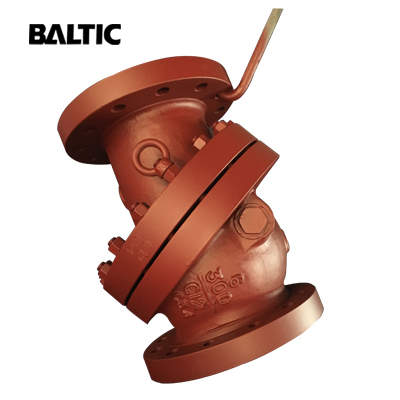How to Evaluate Valves
Because systems rely on valves to control flow, valve selection is crucial. With dozens of types, materials, manufacturers and models to choose from, we should evaluate each valve on the basis of simplicity, efficiency and safety.
Simplicity
Put simply, when a valve needs to open, it should easily open, or vice versa. While this single function may seem simple, it is not as straightforward in industrial plants.
Unfortunately, due to a number of factors, such as corrosion, rust and moisture accumulation, valves can get stuck.
Whether the valve is automated or manual, it should work exactly as intended for years. Just like any other portion of the piping system, the expected service life of the valve is critical to the system’s performance. When a valve becomes inoperable, it causes costly downtime and repairs.
When considering various valve types and materials, choose the valve that will do its job most consistently and perfectly, even if it were to remain unused for years.
Efficiency
Downtime can create tremendous costs for industrial plants. Valves are fundamental to efficiency on systems, and help plants avoid downtime. A valve that does not move easily or on time, or one that is completely stuck, can cause:
Simplicity
Put simply, when a valve needs to open, it should easily open, or vice versa. While this single function may seem simple, it is not as straightforward in industrial plants.
Unfortunately, due to a number of factors, such as corrosion, rust and moisture accumulation, valves can get stuck.
Whether the valve is automated or manual, it should work exactly as intended for years. Just like any other portion of the piping system, the expected service life of the valve is critical to the system’s performance. When a valve becomes inoperable, it causes costly downtime and repairs.
When considering various valve types and materials, choose the valve that will do its job most consistently and perfectly, even if it were to remain unused for years.
Efficiency
Downtime can create tremendous costs for industrial plants. Valves are fundamental to efficiency on systems, and help plants avoid downtime. A valve that does not move easily or on time, or one that is completely stuck, can cause:
- Harmful chemicals to mix inadvertently.
- Flow to continue towards a leak downstream.
- Fluid to reach temperatures above workable ranges.
- Injury to a plant operator trying to manually close it.
Another aspect of efficiency that valves impact is the system’s ongoing productivity. The point on the system with the lowest pressure or temperature rating becomes the limiting factor of the system. If a valve is incompatible with the line's medium, or has a lower temperature or pressure rating than the rest of the system, the entire system can be compromised.
At installation it is easy to know what the system can handle, but wear on the valve, corrosion, erosion and others, can make it the system’s weakest link.
When considering various valve types and materials, choose the valve that will best maintain the temperature, pressure and compatibility of the system’s pipes and fittings over time.
Safety
Above all else, valve safety maintenance is fundamental. If one leaks or sticks, a number of issues can arise:
At installation it is easy to know what the system can handle, but wear on the valve, corrosion, erosion and others, can make it the system’s weakest link.
When considering various valve types and materials, choose the valve that will best maintain the temperature, pressure and compatibility of the system’s pipes and fittings over time.
Safety
Above all else, valve safety maintenance is fundamental. If one leaks or sticks, a number of issues can arise:
- If feeding a reaction, the reaction chemistry can be altered or continue longer than necessary.
- If a valve does not properly seal off a tank when disconnecting the pipe from the tank, a massive leak occurs.
- If an inadvertent flow reversal occurs, a check valve is the first line of defense.
- If a failure occurs downstream, a valve must engage to prevent further spillage and limit exposure to the chemical being conveyed.
- An inoperable valve may unintentionally allow two chemicals to mix, which become hazardous in an industrial plant.
In each case, depending on the pipes' contents, a leak can create hazardous situations for workers in the form of an unsafe spill or airborne toxins. Additionally, inadvertent mixtures or chemical concentrations may create dangerous byproducts or accelerate wear on the pipe.





